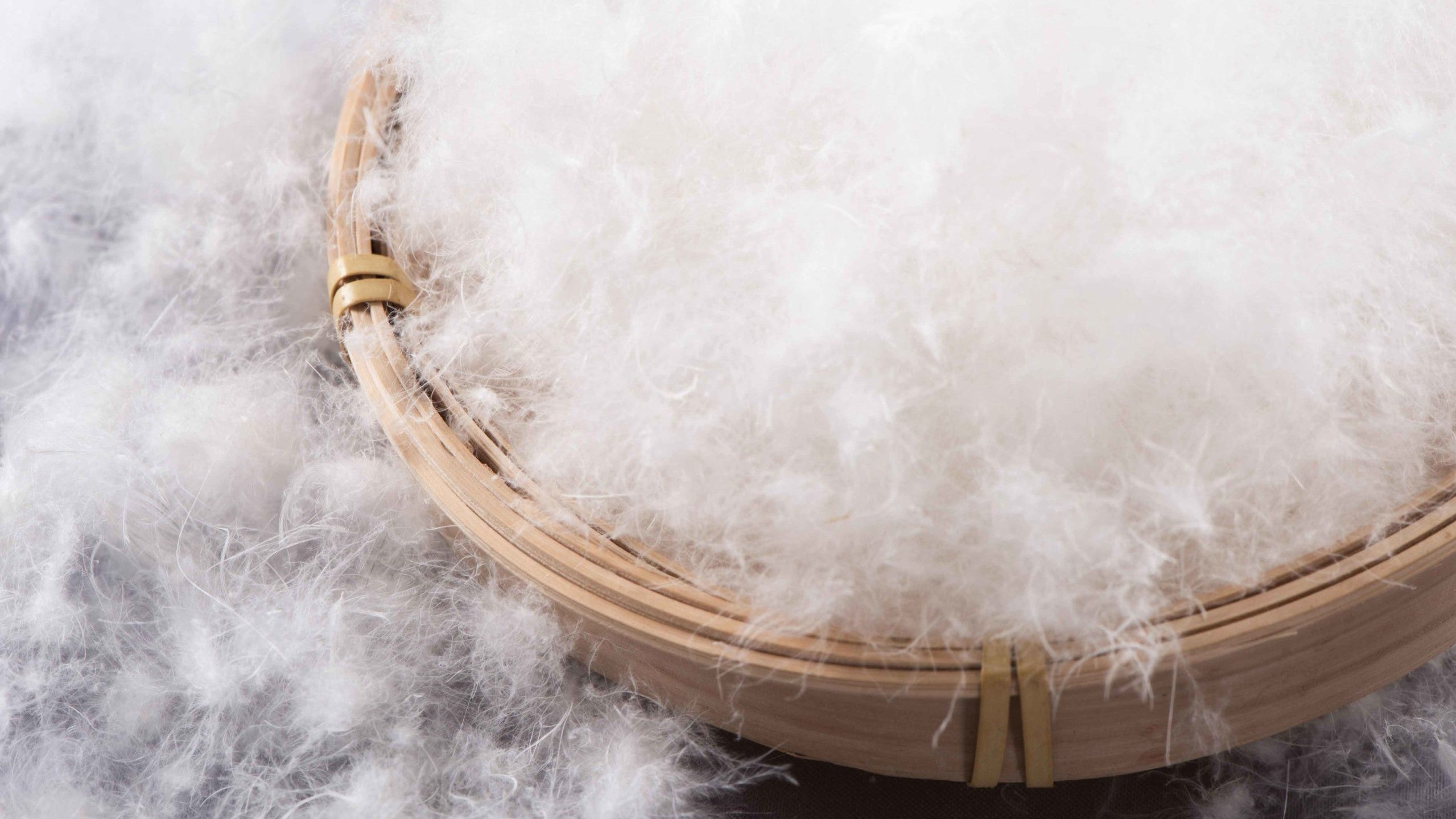While goose down is widely popular as the premium quality pick in super comfortable bedding, the real story is more nuanced. So, is goose or duck down better? This guide will break down the real differences, debunk some common myths, and reveal the most important factor you should actually be looking for when buying a down comforter.
A Quick Refresher: What Makes Down So Special?
First, let’s understand what down fill material is. It’s the soft, three-dimensional clusters found under the tougher exterior feathers of waterfowl. Its unique structure traps air, providing incredible insulation.
The true measure of a down’s quality is its fill power, which measures the cubic inches of loft, or “fluffiness,” that one ounce of down produces. A higher fill power means the down traps more air, providing more warmth with less weight.
In the Spotlight: Goose Down
Goose down is often marketed as the premium, luxury choice in the goose vs duck down comparison.
Key Characteristics:
- Larger Clusters: Geese are typically larger and more mature birds than ducks when harvested. This means they produce larger, stronger down clusters.
- Higher Fill Power Potential: Because the clusters are larger, goose down or duck down isn’t the only question; it’s about potential. Goose down can reach higher fill powers (800+), offering exceptional warmth-to-weight performance.
- Odor: Geese have a different diet than ducks, so their down is less likely to have a noticeable odor, even if minimally processed.
- Pros: Highest insulation potential and breathable ability, generally considered the “gold standard.”
- Cons: Significantly more expensive due to higher demand and lower supply.
The Worthy Contender: Duck Down
Duck down is often seen as the more common or budget-friendly option, but high-quality duck down is a formidable contender.
Key Characteristics:
- Slightly Smaller Clusters: Coming from smaller birds, duck down clusters are typically a bit smaller than those from geese.
- Excellent Performance: High-quality duck down from mature birds can still achieve excellent fill powers (up to 750+), rivaling many types of goose down. In fact, the most expensive down available is Eider down from the Eider Duck.
- Odor: Can sometimes have a faint “gamey” odor if not cleaned and sanitized to the highest standards. Reputable brands mitigate this entirely by sufficiently processing the down to retain its natural oils while ensuring freshness.
- Pros: More affordable and widely available, it offers fantastic value for its performance.
- Cons: Lower maximum fill power potential compared to the very best goose down; potential for odor if not properly processed.
The Verdict: Which Is Actually Better?
The Big Reveal: It’s Not About the Bird, It’s About the Fill Power.
This is the most important takeaway in the difference between duck and goose down. The quality, age, and maturity of the bird matter more than the species. A high-quality, 700 fill power duck down is significantly better and warmer than a low-quality, 550 fill power goose down. The sorting process, which separates large clusters from smaller ones, is also crucial.
Think of it like comparing a small, unripe strawberry to a large, perfectly ripe one. The quality and maturity matter more than the basic type.
Head-to-Head Comparison Chart
| Feature | Goose Down | Duck Down |
|---|---|---|
| Potential Fill Power | Can exceed 800+ | Typically up to 750+ |
| Cluster Size | Generally Larger | Generally Smaller |
| Cost | Premium / Higher | More Affordable / Better Value |
| Availability | More Limited | Widely Available |
| Natural Odor Potential | Very Low | Low (if properly cleaned) |
How to Choose the Right Down for You
So, which is better, duck or goose down, for your specific needs?
Choose Goose Down if:
- You are seeking the absolute peak of insulation properties (800+ fill power).
- Budget is not your primary concern.
- You want the “best of the best” label.
Choose Duck Down if:
- You are looking for excellent performance and outstanding value.
- You understand that a high fill power (e.g., 650-750) proves that it is duck down as good as goose down in many cases.
- You are a savvy shopper who prioritizes quality metrics over marketing labels when buying a down-filled product.
Final Words: Shop Smarter, Not Harder
Everyone loves cozying up in the cocooning warmth of a soft down duvet insert. When choosing one, you’ll face a classic debate: goose down vs duck down. It sounds like a minor detail, but the luxury bedding world is full of discussion on which is superior.
Don’t get caught up in the “goose vs. duck” debate. The answer to “Is goose down better than duck down?” is that it depends on the quality. Instead of focusing on the bird, focus on finding the highest fill power you can within your budget.
High-quality comforters are an investment in your sleep. By understanding that fill power is the true indicator of quality, you can choose the perfect down product with confidence, regardless of which waterfowl it came from.



Leave a comment